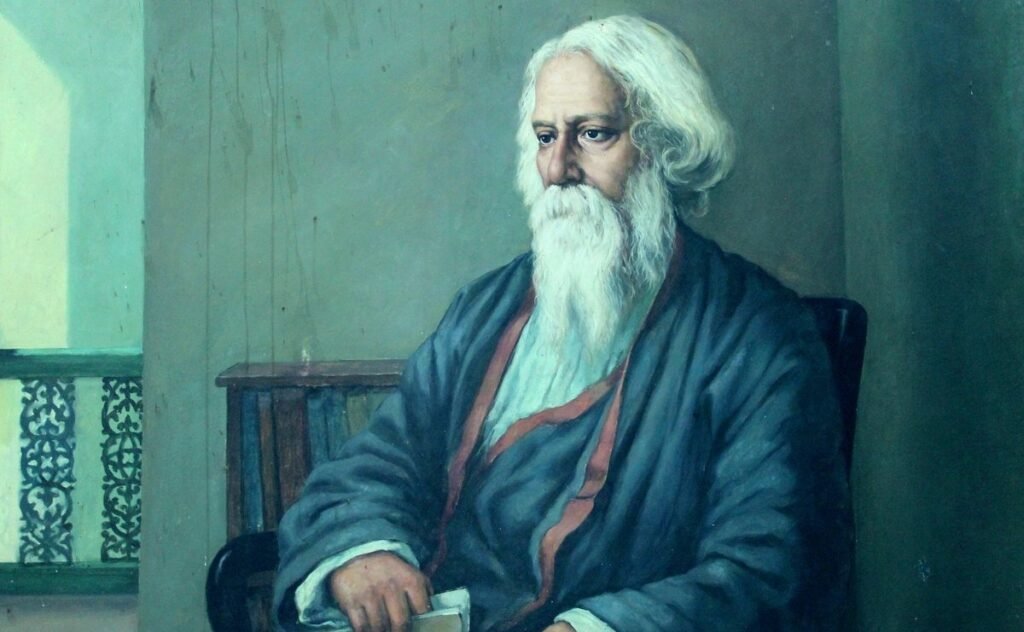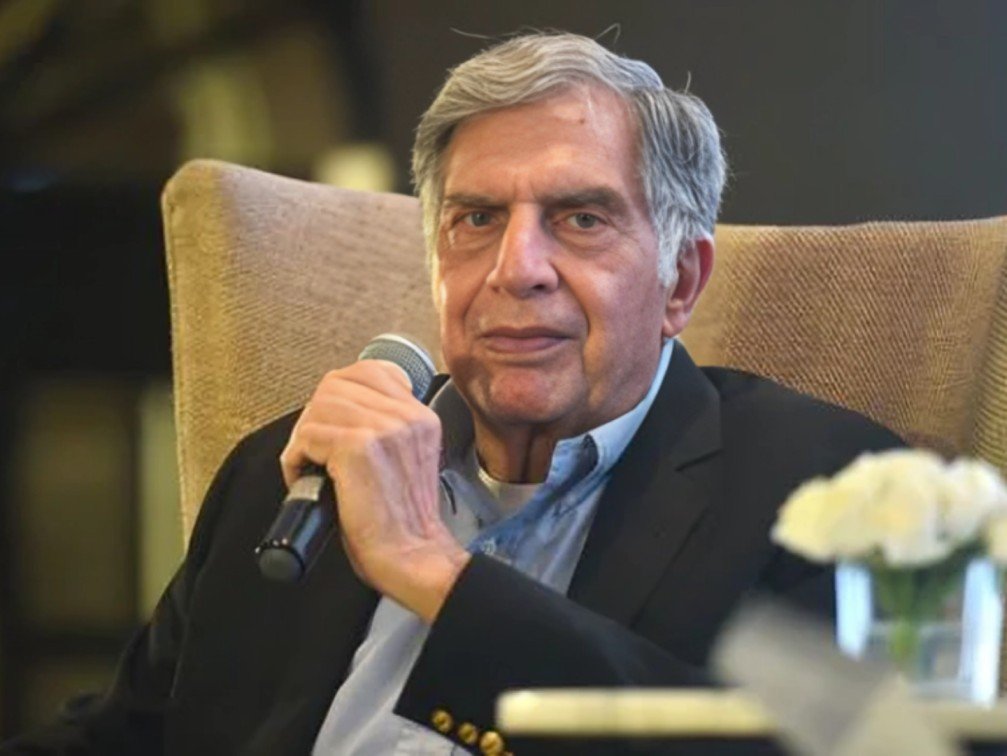Rabindranath Tagore (1861–1941), one of the best-known and most multi-faceted individuals in Indian and world history, is a poet, philosopher, playwright, novelist, composer, painter, educationist, and social reformer. The first non-European Nobel Prize laureate in Literature and the author of an extensive literary corpus, Tagore’s legacy remains a living presence around the globe through his literature, educational practices, songs, and humanitarian vision.

Early Life and Family Background
Rabindranath Tagore was born on 7 May 1861, in the prominent Tagore family at Jorasanko Thakur Bari in Calcutta, British India. He was the 14th child of Debendranath Tagore, a major leader of the Brahmo Samaj (a progressive reformist movement in Hinduism) and Sarada Devi. The Tagores had a reputation for their social and aesthetic refinement, intellectual illumination, and their leadership roles in the Bengali Renaissance.
Tagore came from a family in which literature and arts were central to a family life. Although the family had literary and artistic roots, Tagore was still able to learn about music, literature, and philosophy from an early age. His siblings were also accomplished. His eldest brother, Dwijendranath was a poet and philosopher, while his other brother, Satyendranath Tagore, was also the first Indian to join the Indian Civil Services. His sister, Swarnakumari Devi, was the first novelist in Bengali literature as well as an early social worker.
Tagore mostly received his education at home from private tutors. Tagore showed a remarkable ability for writing from an early age. He wrote his first poem at eight years old and when he was sixteen years old, he published his first substantial work, Banaphul (Wild Flowers), under the pseudonym “Bhanusimha.”
Education and Exposure to the West
In 1878, Tagore traveled to England with the intention of becoming a barrister. He registered at University College London to study law, but soon dropped out of formal study in favour of surrounding himself with the writings of Shakespeare, the Romantics, and Western classical music. His exposure to European literary and philosophical ideas widened his vision and ultimately influenced his themes and architecture in writing and with ideas.
Although he did not obtain a degree, Tagore’s time in England changed him. He returned to India in 1880 better informed about global thought, and with new resolve to connect Eastern and Western art and intellectual tradition.
Literary Career and Major Works
Tagore’s literary career lasted over 60 years, resulting in a gigantic and very heterogeneous collection of writing that included poetry, novels, short stories, plays, essays, and songs. Tagore is most well-known for his deep and lyrical poetry, but he also writes prose exquisitely, synthesizing realism, spiritualism, and philosophy.
His 1910 work, Gitanjali (Song Offerings), is a gifted assembly of spiritual poems that won him the Nobel Prize in Literature in 1913, making him the first and only Asian recipient of this prize. The English version published 3 years later, which Tagore translated himself, was presented to the West by W.B. Yeats, with writings about the book and introduction.
Significant Poetic Works by Rabindranath Tagore
| Title | Year | Description |
|---|---|---|
| Manasi | 1890 | A collection of lyrical poems on diverse themes. |
| Sonar Tori | 1894 | Symbolic poetry reflecting solitude and inner quest. |
| Balaka | 1916 | Poems focused on speed, dynamism, and modernity. |
| Purabi | Later | A mature collection capturing romantic and spiritual tones. |
| Shes Saptak | Later | Deeply introspective poems from his final years. |
| Patraput | Later | Reflective and philosophical poetic collection. |
Major Novels by Rabindranath Tagore
| Title | Year | Theme/Description |
|---|---|---|
| Chokher Bali | 1903 | A complex tale of widowhood, desire, and societal norms. |
| Gora | 1909 | Philosophical exploration of identity, caste, and nationalism. |
| Ghare-Baire | 1916 | Nationalism vs. personal freedom; adapted into a film by Satyajit Ray. |
| Jogajog | 1929 | Conflict between tradition and modern relationships. |
| Char Adhyay | 1934 | A narrative on love, politics, and revolutionary ideologies. |
Tagore also pioneered the short story genre in Bengali literature. Stories like Kabuliwala, The Postmaster, and Atithi are timeless classics that highlight his deep empathy and understanding of human psychology.
Playwriting and Essays
Tagore revolutionized Bengali drama through his plays, which explored themes of freedom, truth, and spiritual awakening. Notable works include:
- Dak Ghar (The Post Office)
- Raktakarabi (Red Oleanders)
- Chitrangada
- Achalayatan
His essays addressed topics ranging from nationalism and education to aesthetics, science, and religion. His prose was characterized by intellectual rigor, spiritual insight, and visionary thought.
Rabindra Sangeet and Musical Contributions
An incredibly gifted composer, Tagore produced more than 2000 songs, called Rabindra Sangeet, none of which have lost their relevance in Bengali society today. His musical compositions combine elements of Indian classical music, combined with the meaning and sentiment of folk, and various Western styles.
He also composed the national anthems for India (Jana Gana Mana) and Bangladesh (Amar Shonar Bangla), and inspired the national anthem for Sri Lanka.
Tagore’s musical style sought to provide the means for natural rhythms and expression of emotion; he restructured the majority of songs using fluid, emotive melodies and rejected a rigid structure.
Painting and Visual Arts
Interestingly, Tagore did not begin to paint until he was in his sixties. Despite being self-taught and not trained in conventional ways of painting, visual art was respected for its boldness in abstraction and symbolic forms. He exhibited around Europe, including exhibitions in Paris, London, and Berlin, and his art was praised by prominent artists, such as Paul Klee and André Gide.
Educational Reforms and Visva-Bharati University
Tagore had faith in the transformative power of education. He founded a school at Santiniketan in 1901 that emphasized natural learning, creativity, and individual freedom. In 1921, he founded Visva-Bharati University to embody a vision where “the world meets in a single nest.”
The university attracted scholars from far and wide, including Sylvain Lévi, C.F. Andrews, and Leonard Elmhirst, and became an innovative place for Indian education and culture.
Social Perspectives and Political Philosophy
Tagore was genuinely patriotic, although he opposed the quest for narrow-minded nationalism. He supported India’s quests for independence but had reservations about violent ideologies or ideologies that divided people. He promoted a universal humanism, cooperation among peoples, and cultural interchange.
Even after being knighted by the British Crown in 1915, Tagore renounced the title following the infamous Jallianwala Bagh massacre in 1919, where British troops violently suppressed Indian civilians, killing many. In protest, Tagore wrote a letter to the British Crown that became famous and represented both moral outrage and a sincere concern for justice.
Throughout his life, Tagore had respectful but intellectually fulfilling exchanges of correspondence with Mahatma Gandhi, Jawaharlal Nehru, and thinkers from around the world, including Albert Einstein. In exchanges with Einstein, they empirically discussed the nature of reality, the role of physics, ideas of consciousness, and the value of science.
Travel and Global Influence
Tagore visited over 30 countries between 1878 – 1932, including the United Kingdom, United States, Germany, France, Japan, China, Iran, Argentina and the Soviet Union. His travels served the dual purposes of artistic expression and diplomacy—sharing Indian culture with the world and learning from others.
He lectured, met intellectuals, and inspired the world community with his message of peace, unity, and cultural synthesis.
Personal Life
In 1883, Tagore was married to Mrinalini Devi, and they had five children together. Tragore lost his wife in 1902 and lost his daughter Renuka (1903), father Debendranath (1905), and son Samindranath (1907). Each of these had a tremendous impact on Tagore and manifested themselves in his poetry and introspective writing.
Having experienced these kinds of tragic loss, Tagore was writing and producing work at a furious pace. He took his grief into deeper inquiry in terms of spiritual and philosophical depth.
Death and Legacy
Rabindranath Tagore died on 7 August 1941 in his ancestral home in Jorasanko. His death brought forth an outpouring of mourning across India and the world.
Legacy Highlights:
- First Asian Nobel Laureate
- Author of two national anthems
- Founder of Visva-Bharati as a repository for holistic education
- Literary influence across generations and across various parts of the globe
- A pioneer in fusing Eastern and Western thought
Tagore was honored in civilizational domains such as literature, education, music and the arts. Rabindra Jayanti, the occasion to honor Tagore’s birthday, is celebrated on annual
Rabindranath Tagore was more than a writer or thinker; he was a visionary universalist whose life and work transcended nation, language and culture. He was a bard of modern India. His vision of a world bound by compassion, creativity and understanding remains essential in our fragmented world.
“Where the mind is without fear and the head is held high… Into that heaven of freedom, my Father, let my country awake.”
— Rabindranath Tagore
Stay tuned to inspire4ward for more updates.



